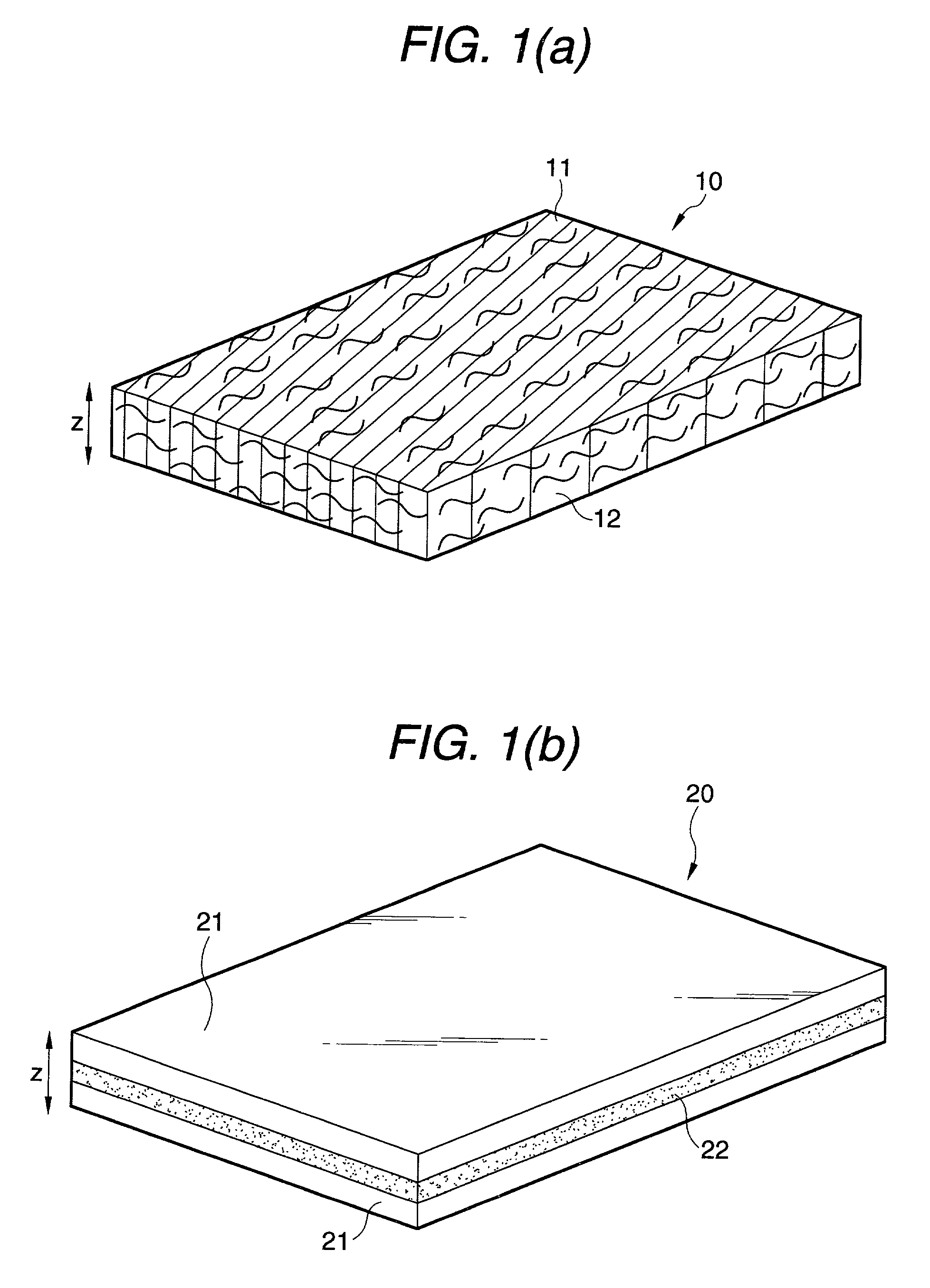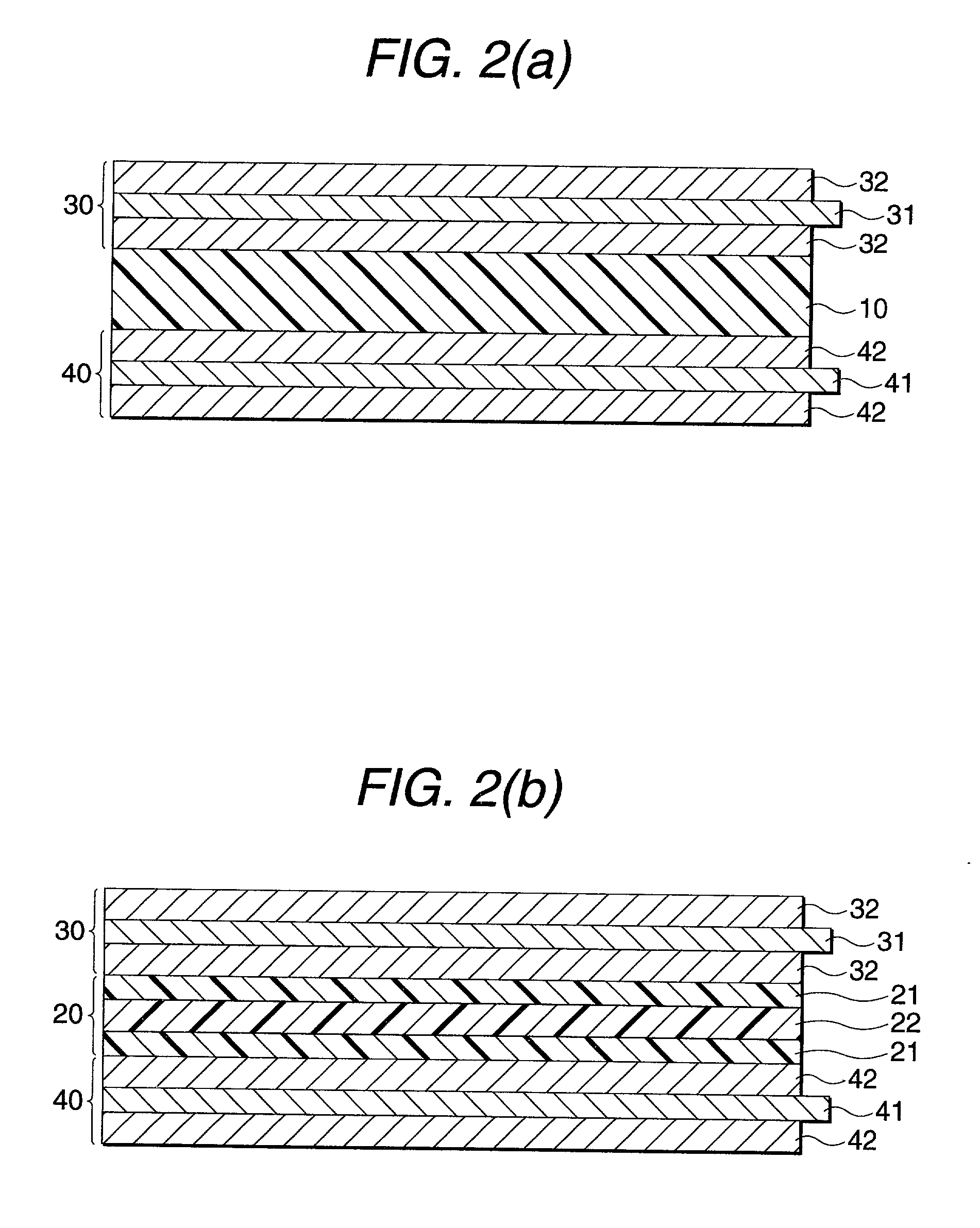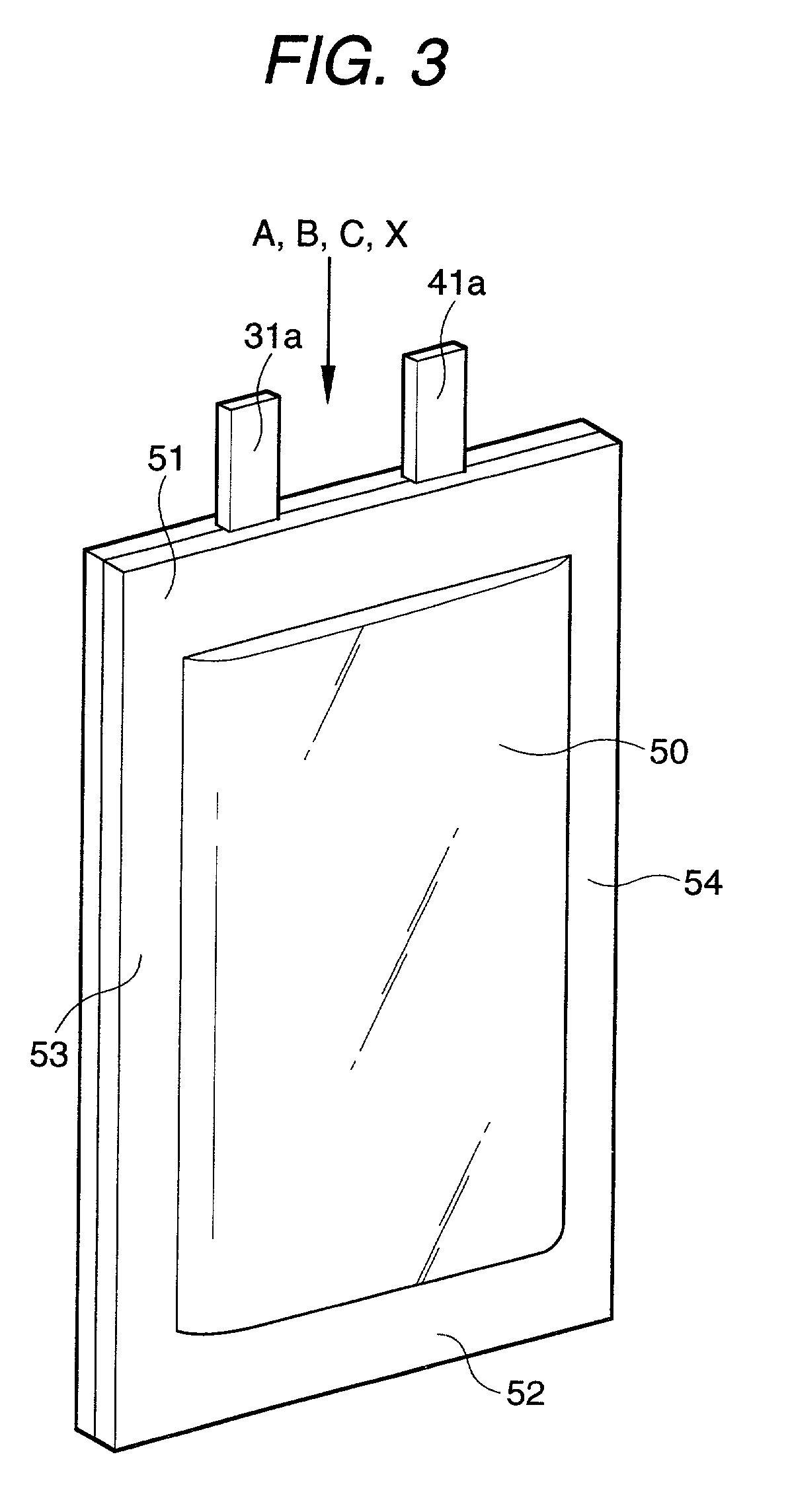Nonaqueous secondary battery
a secondary battery, non-aqueous technology, applied in the direction of cell components, final product manufacturing, sustainable manufacturing/processing, etc., can solve the problems of deteriorating cycle, low electrolyte reltainability, and overcharge characteristic as well as cycle characteristic deterioration
- Summary
- Abstract
- Description
- Claims
- Application Information
AI Technical Summary
Benefits of technology
Problems solved by technology
Method used
Image
Examples
example 2
[0031] (2) Example 2
[0032] Non-woven fabric made of polypropylene (PP) 11 having a thickness of 30 .mu.m serving as a reinforcing agent is integrally filled with polyvinylidene fluoride (PVdF) resin 12, thereby preparing a separator of a composite resin film. The separator 10 thus prepared is used as the composite resin film b according to Example 1.
example 3
[0033] (3) Example 3
[0034] Polyvinylidene fluoride (PVdF) resin films 21 and 22 are bonded on both surfaces of a microporous film of polyethylene (PE) having a thickness of 30 .mu.m serving as a reinforcing agent. thereby preparing a separator of a composite resin film. The separator 20 thus prepared is used as the composite resin film b according to Example 3.
PUM
 Login to View More
Login to View More Abstract
Description
Claims
Application Information
 Login to View More
Login to View More - R&D
- Intellectual Property
- Life Sciences
- Materials
- Tech Scout
- Unparalleled Data Quality
- Higher Quality Content
- 60% Fewer Hallucinations
Browse by: Latest US Patents, China's latest patents, Technical Efficacy Thesaurus, Application Domain, Technology Topic, Popular Technical Reports.
© 2025 PatSnap. All rights reserved.Legal|Privacy policy|Modern Slavery Act Transparency Statement|Sitemap|About US| Contact US: help@patsnap.com



